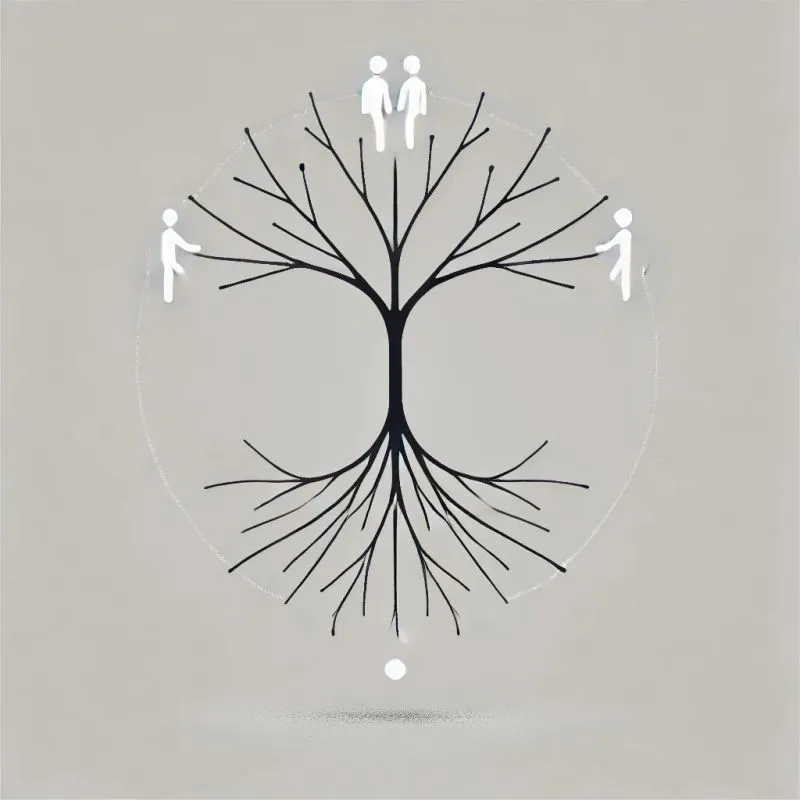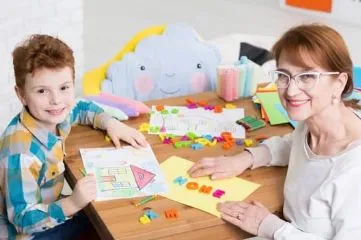Ever wonder why some people cling while others pull away in relationships? Your attachment style, formed in early childhood, shapes every relationship you have. Learn the 4 attachment styles and discover how understanding yours can transform your connections with others.
Why Do You Act That Way When Someone Gets Close?
Have you ever noticed patterns in your relationships that seem to repeat themselves? Maybe you find yourself pulling away when someone wants to get closer, or perhaps you worry constantly about being abandoned even in healthy relationships. These aren't random quirks—they're likely reflections of your attachment style, a deep-seated pattern formed in your earliest relationships that continues to influence how you connect with others today. At LissnUp, we understand that recognizing these patterns isn't about judgment—it's about gaining insight that can help you build the meaningful, secure relationships you deserve. Your attachment style isn't your destiny; it's simply the starting point for understanding and growth.
The Foundation: How Attachment Styles Begin
Your First Relationship Sets the Template
Attachment theory, developed by psychiatrist John Bowlby in the 1950s, reveals that our earliest relationships with caregivers create an internal blueprint for how relationships work. If your needs were consistently met with warmth and responsiveness, you likely learned that relationships are safe and people are trustworthy. If your experiences were inconsistent, overwhelming, or neglectful, you developed different survival strategies that made sense at the time—but may now complicate your adult relationships.
It's Not About Perfect Parenting
Understanding attachment styles isn't about blaming parents or caregivers. Most people did their best with the resources and knowledge they had. Attachment styles can form from various early experiences: having overwhelmed or stressed caregivers, experiencing inconsistent responses to your needs, growing up in chaotic environments, or even having caregivers who struggled with their own unresolved trauma. What matters now is understanding your patterns so you can choose how to respond in current relationships.
The Four Attachment Styles: Which One Sounds Like You?
Secure Attachment: 'Relationships Feel Natural and Safe'
About 50-60% of people have secure attachment. If this is you, relationships generally feel manageable and enjoyable. You're comfortable with intimacy and independence, can communicate your needs clearly, trust that conflicts can be resolved, and don't worry excessively about being abandoned or controlled. You likely had caregivers who were consistently responsive and emotionally available, helping you develop a positive view of both yourself and others.
Anxious Attachment: 'I Need You, But I'm Afraid You'll Leave'
People with anxious attachment (about 15-20% of the population) often experienced inconsistent caregiving—sometimes their needs were met beautifully, other times they were ignored or dismissed. This creates a deep fear of abandonment coupled with an intense desire for closeness. You might find yourself constantly seeking reassurance, worrying about your partner's feelings, or feeling like you give more to relationships than you receive. The good news? Your capacity for deep emotional connection is a strength.
Avoidant Attachment: 'I'm Fine on My Own'
Avoidant attachment (about 20-25% of people) typically develops when caregivers were emotionally unavailable, critical, or dismissive of emotional needs. To protect yourself, you learned that independence is safer than vulnerability. You might struggle with emotional intimacy, feel uncomfortable when partners need 'too much' from you, or have difficulty expressing your own needs. Your self-reliance is a strength, but it can sometimes keep you from experiencing the full richness of emotional connection.
Disorganized Attachment: 'I Want Close Relationships, But They Terrify Me'
Disorganized attachment (about 5-10% of people) often stems from childhood trauma, abuse, or having caregivers who were both a source of comfort and fear. This creates an internal conflict—desperately wanting connection while simultaneously fearing it. You might find your behavior in relationships seems contradictory: pushing people away when you need them most, or alternating between clingy and distant behavior. This isn't 'crazy'—it's a logical response to impossible early circumstances.
How Your Attachment Style Shows Up in Adult Relationships
Communication Patterns
Your attachment style influences how you express needs, handle conflict, and interpret your partner's behavior. Secure individuals tend to communicate directly and assume positive intent. Anxious attachers might over-communicate or seek excessive reassurance. Avoidant individuals often struggle to express emotional needs or may shut down during conflict. Those with disorganized attachment might have unpredictable communication patterns that reflect their internal push-pull with intimacy.
Response to Relationship Stress
When relationships get challenging, your attachment system activates survival strategies learned in childhood. Secure people tend to address problems directly and maintain connection. Anxious attachers might become hyper-focused on the relationship, seeking constant contact or reassurance. Avoidant individuals often withdraw or minimize the importance of the relationship. Disorganized attachers might alternate between desperate attempts to connect and complete emotional shutdown.
Trust and Intimacy Patterns
Your attachment style affects how quickly you trust others and how comfortable you are with emotional and physical intimacy. It influences whether you assume people will be there for you, how much of yourself you're willing to reveal, and how you interpret your partner's need for space or closeness. Understanding these patterns can help you recognize when your attachment system is driving behaviors that might not serve your current relationship.
The Hope: Attachment Styles Can Change
Secure Relationships Can Heal Insecure Attachment
Research shows that being in a secure, loving relationship can actually help heal insecure attachment patterns. When someone consistently responds to you with kindness, reliability, and emotional availability, your nervous system begins to learn new patterns of safety and trust. This process, called 'earned security,' demonstrates that your early experiences don't have to determine your relationship future.
Self-Awareness Is the First Step
Simply understanding your attachment style can be transformative. When you recognize that your intense fear of abandonment or your tendency to withdraw comes from old protective strategies rather than current reality, you can begin to choose different responses.
Sometimes having someone who truly listens without judgment can help you process these patterns and develop healthier ways of connecting.
Building Security in Relationships
Regardless of your attachment style, you can work toward more secure relationships by practicing emotional awareness, communicating your needs clearly, responding to your partner with empathy and patience, and recognizing when your attachment system is activated so you can pause before reacting.
Learning to listen empathetically to both yourself and your partner creates the safety that allows attachment healing to occur.
Your Attachment Style Isn't Your Limitation—It's Your Starting Point
Understanding your attachment style isn't about putting yourself in a box or using it as an excuse for relationship difficulties. Instead, it's about gaining compassion for yourself and insight into your patterns so you can make conscious choices about how you want to show up in relationships. Every attachment style has both challenges and strengths. Anxious attachers bring passion and emotional depth. Avoidant individuals offer stability and independence. Those with disorganized attachment often develop incredible empathy and resilience. Secure individuals model what's possible for all of us. Remember, attachment styles exist on a spectrum, and most people show different patterns in different relationships or situations. The goal isn't to achieve perfect security overnight, but to gradually build more awareness, self-compassion, and secure ways of connecting. Your early relationships may have shaped your attachment style, but your current and future relationships have the power to heal and transform it. With patience, understanding, and the right support, everyone can move toward more secure, fulfilling connections with others.





